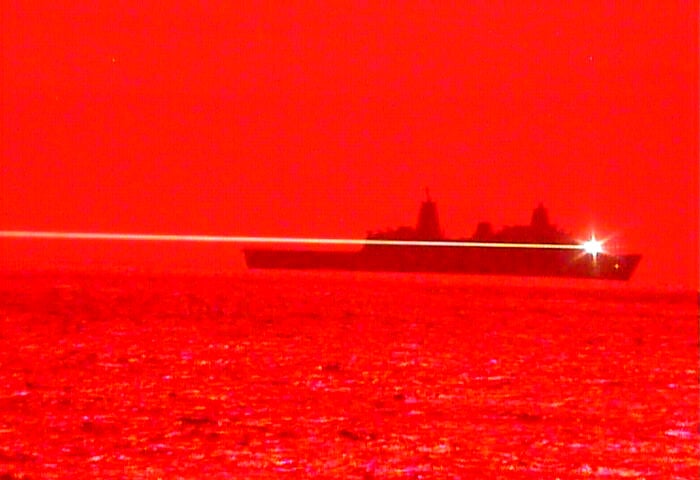USS Portland Tests Experimental Laser Weapon Against Drone
U.S. Pacific Fleet Public Affairs announced on the 22nd May that the USS Portland (LPD 27) had successfully disabled an unmanned aerial vehicle (UAV) using an experimental Solid State Laser. The Technology Maturation Laser Weapon System Demonstrator (LWSD) MK 2 MOD 0 was tested onboard the amphibious transport dock ship on the 16th May at Pearl Harbor, Hawaii.
The operational employment of the LWSD on a Pacific Fleet ship marks the first system-level implementation of a high-energy class solid-state laser by the U.S. Navy. The LWSD was originally developed by the Office of Naval Research and Northrop Grumman, with full System and Ship Integration and Testing led by NSWC Dahlgren and Port Hueneme.
“By conducting advanced at sea tests against UAVs and small crafts, we will gain valuable information on the capabilities of the Solid State Laser Weapons System Demonstrator against potential threats,” said Capt. Karrey Sanders, commanding officer of the USS Portland.
The U.S. Navy began developing direct-energy weapons (DEWs) in the 60s, eventually including laser weapons. These are electromagnetic systems that convert chemical or electrical energy into radiation and focus it on targets, causing physical damage that neutralizes or hinders the operational capability of the targets.
The U.S. Navy hopes its development of new DEWs, such as the LWSD, will better enable it to deal with new emerging threats from UAVs, armed small boats, and adversary next-generation intelligence, surveillance, and reconnaissance systems. They have the potential to provide significant benefits by giving coùmmanders more decision space and response options.
“The Solid State Laser Weapons System Demonstrator is a unique capability the Portland gets to test and operate for the Navy, while paving the way for future weapons systems, “ said Sanders. “With this new advanced capability, we are redefining war at sea for the Navy.”

